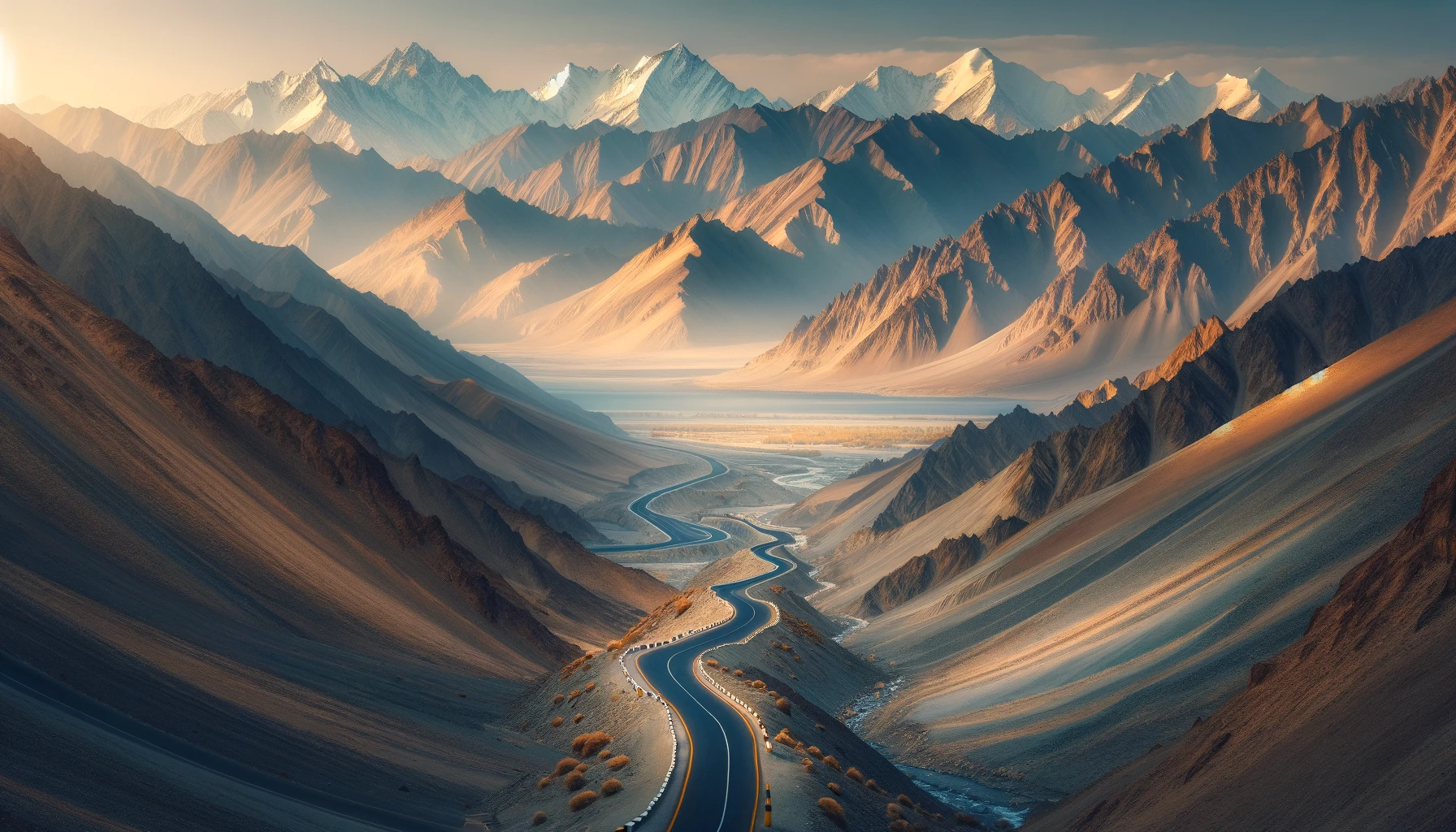Namaste Narrative’s Travel Diaries is taking you today to discover the Last Road of India, in Ladakh, we have been to Rajasthan and Kerala in the previous blogs, you should give it a glance on those as well.
India, a land of diverse landscapes and cultures, holds mysteries and tales at every corner. Among these, the “Last Road of India” stands out as a symbol of solitude and exploration, leading adventurers to the very edge of the country’s geographical boundaries. This path is not just a road; it’s a journey into the unknown, offering a unique blend of natural beauty, serenity, and a sense of reaching the end of the world.
Location and Transportation:
The Last Road of India is often associated with roads that lead to remote border areas, such as those in the northeastern states or in the northernmost regions of Ladakh. One such road is the stretch that leads to Turtuk in Ladakh, which was opened to tourists in 2010. Turtuk is one of the northernmost villages of India, lying close to the Line of Control between India and Pakistan.
To reach this road, travelers typically start their journey from Leh, the capital of Ladakh. The journey from Leh to Turtuk involves a drive of approximately 200-300 kilometers, depending on the specific destination, through some of the most stunning landscapes the region has to offer. Public transport is scarce, so hiring a taxi or arranging a private vehicle is advisable for this journey.
Historical Significance:
The Last Road of India is steeped in history, with areas like Turtuk having a rich cultural heritage that dates back centuries. Turtuk, for instance, was part of Baltistan and was under Pakistan’s control until 1971, after which it was incorporated into India. The village is a testament to the complex geopolitical history of the region, offering insights into the blend of Buddhist and Muslim cultures.
Tourist Spots:
The journey along the Last Road of India is dotted with mesmerizing tourist spots. Key attractions include:
- Pangong Lake: A high-altitude lake known for its changing colors, situated en route.
- Khardung La: One of the highest motorable passes in the world, offering panoramic views of the Himalayas.
- Diskit Monastery: Famous for its towering Maitreya Buddha statue, providing a spiritual stopover.
- Hunder Sand Dunes: A desert in the midst of the snow-capped mountains, known for its Bactrian camel rides.
Geographical Importance:
This road is a marvel of engineering and determination, cutting through some of the most challenging terrains, including high-altitude passes, rugged landscapes, and near-perpetual snowfields. It highlights India’s geographical diversity, from the arid deserts of Ladakh to the lush valleys of the Northeast.
Best Time to Visit:
The best time to embark on this journey is from May to September when the roads are clear of snow and the weather conditions are most favorable for travel. Book your trip from India’s one of the most trusted travel portal, Thomas Cook, click one the link : Book your trip !
Local Cuisine:
Travelers can savor local Ladakhi cuisine, which includes dishes like Thukpa, Momos, and Tsampa, offering a taste of the region’s cultural blend.
Lesser-Known Spots:
Tyakshi: The Apricot Village
Nestled near the northern border of India, Tyakshi is a lesser-known village in the Nubra Valley region of Ladakh. This quaint village is not just a place but a serene experience, surrounded by rugged mountains and dotted with lush apricot orchards.
Yarab Tso Lake
Yarab Tso Lake, nestled in the serene landscapes of Ladakh’s Nubra Valley, is a hidden gem often overlooked by the typical tourist trail. Considered sacred by locals, this tranquil lake is accessible via a short and scenic hike, offering a peaceful retreat amidst nature’s untouched beauty. Surrounded by stark, rugged mountains, its crystal-clear waters reflect the vast Ladakhi skies, creating a meditative and serene ambiance. Visiting Yarab Tso provides a unique opportunity to experience the spiritual and natural wonders of Ladakh, inviting travelers to pause, reflect, and immerse themselves in the tranquility that pervades this sacred site.
Conclusion:
The Last Road of India is more than just a route; it’s an experience that challenges the spirit and rewards the soul with its pristine beauty and tranquil solitude. It beckons the intrepid traveler to embark on a journey that is both inward and outward, exploring the final frontiers of India’s vast and varied landscape.


